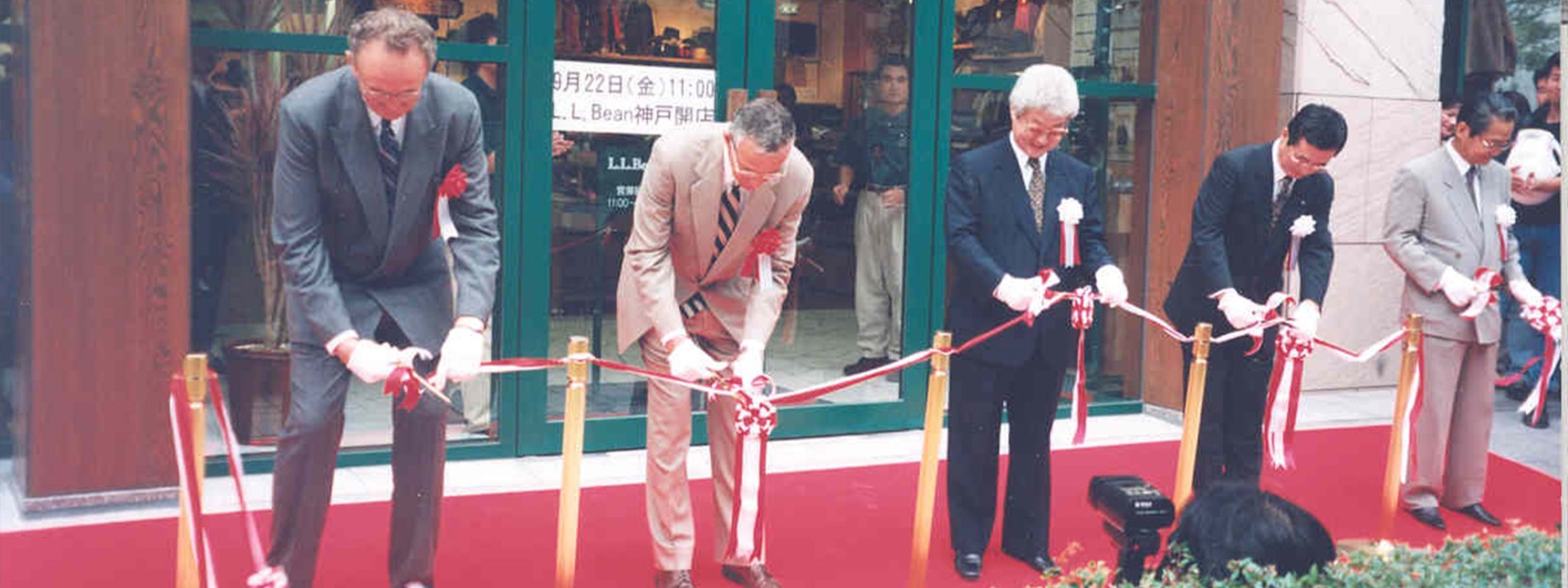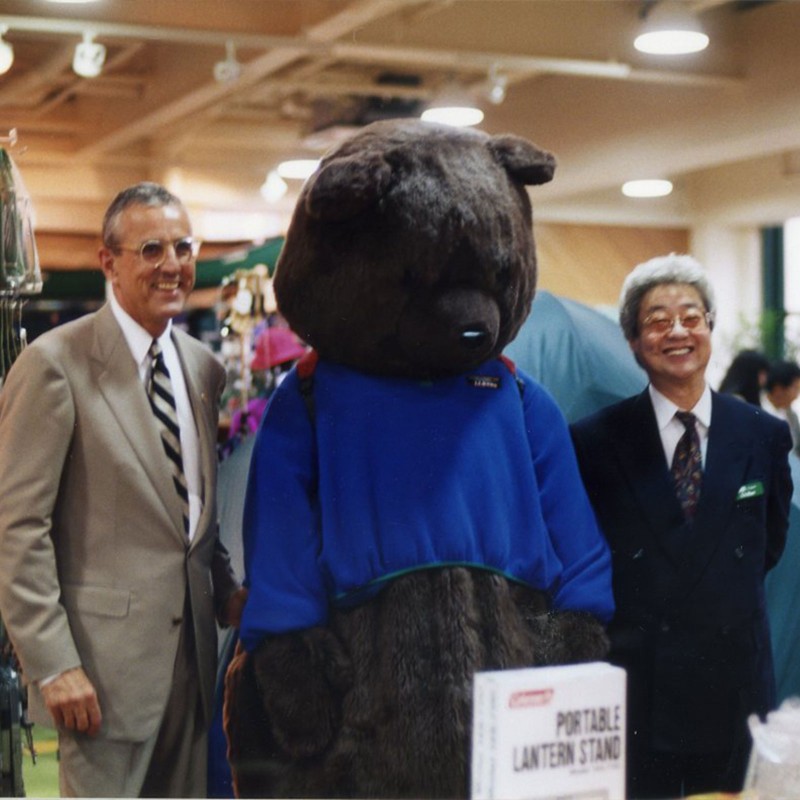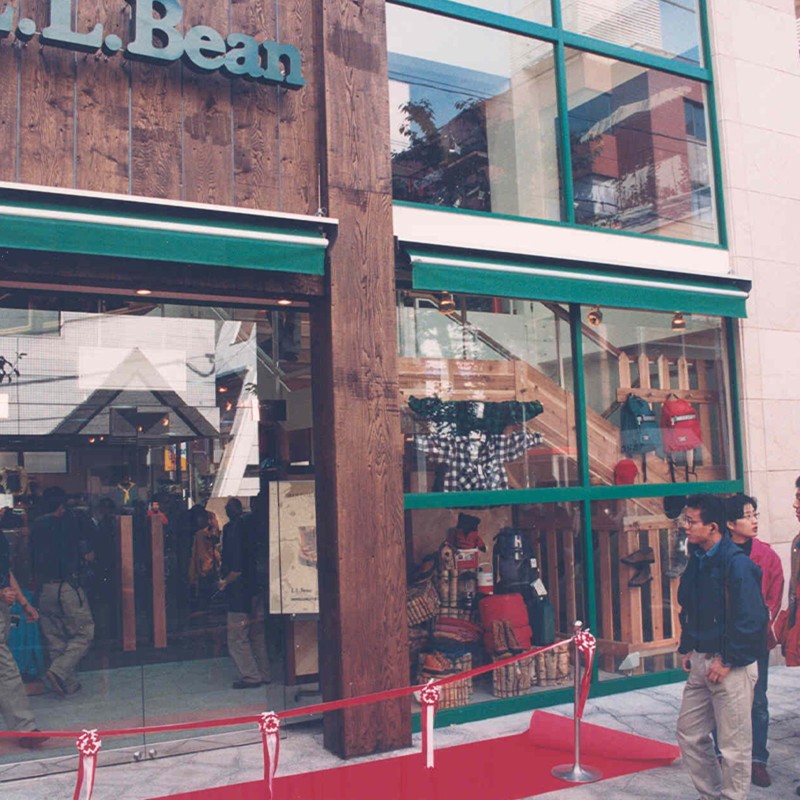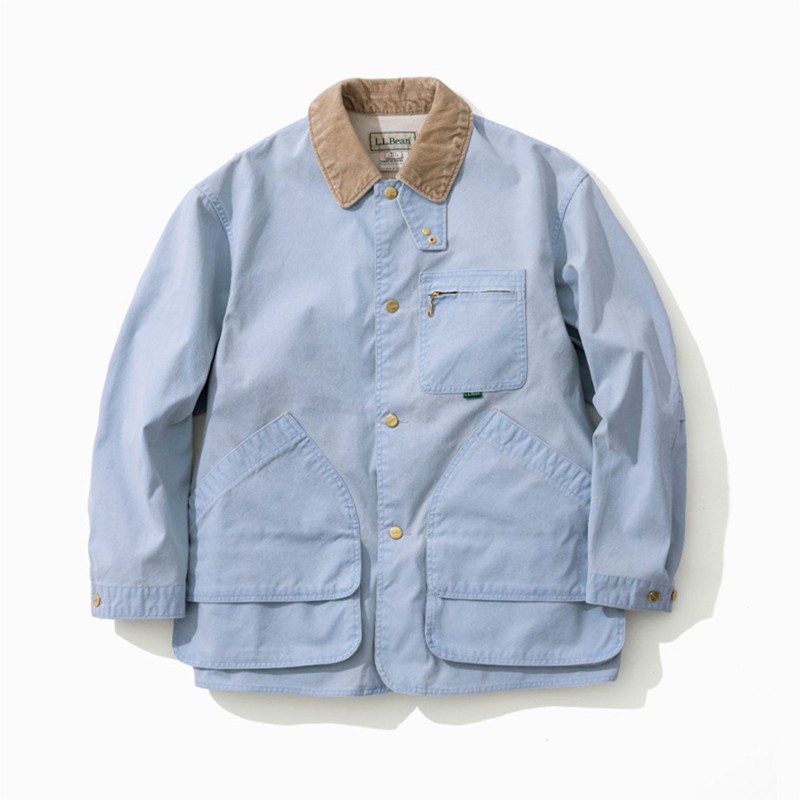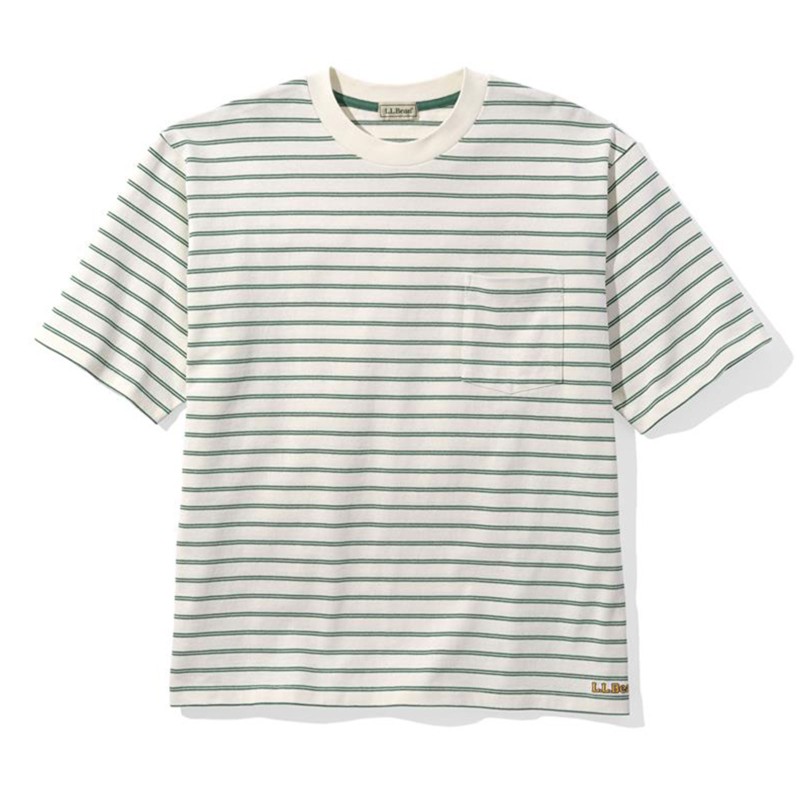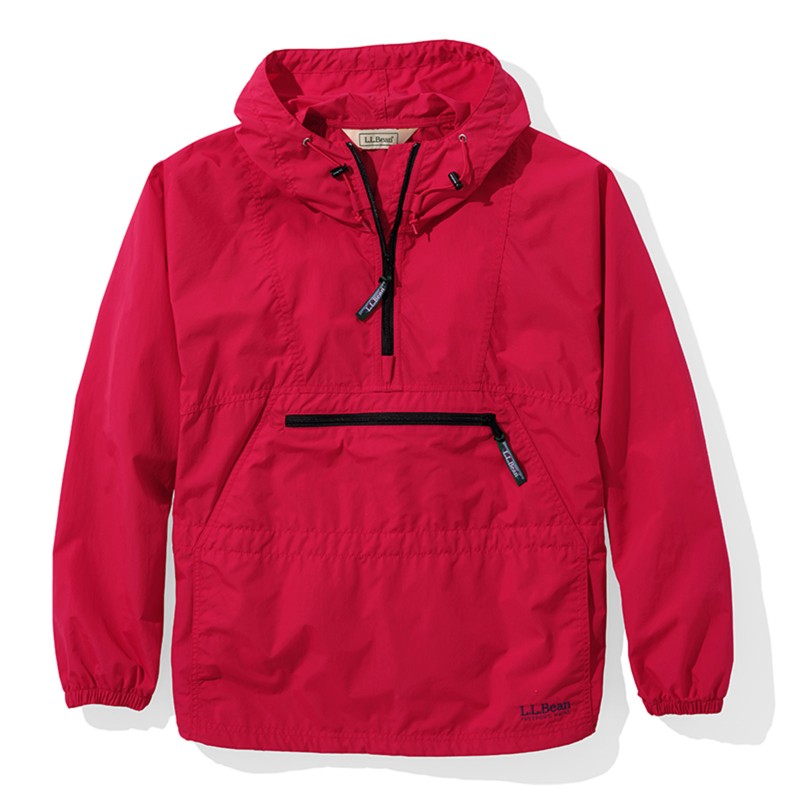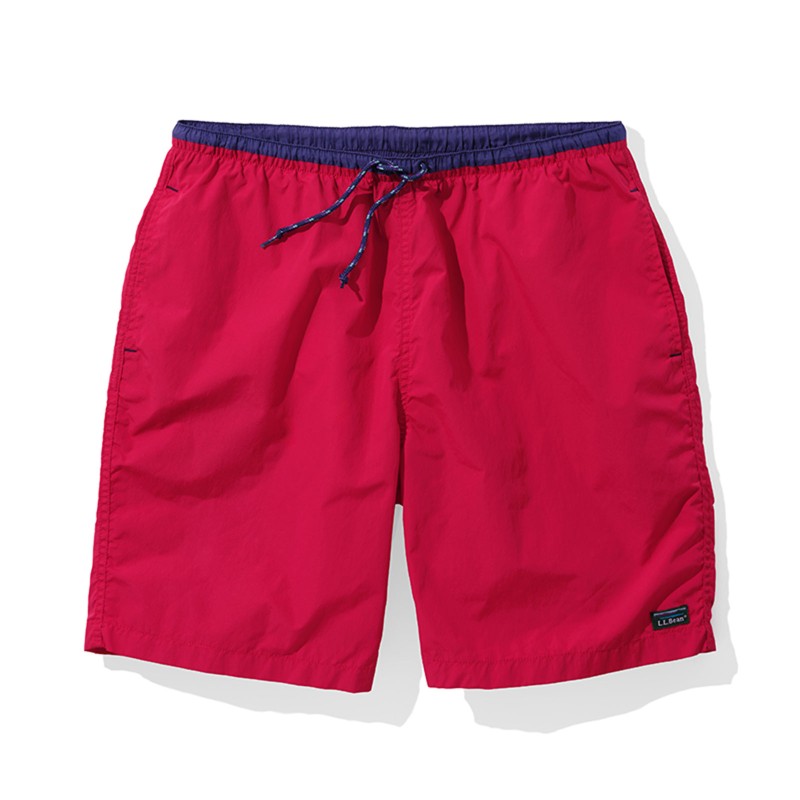Freeport, ME, March 3, 2025
L.L.Bean Japan Collection: From Maine to Tokyo and Back Again
6 Min. Read | Inside L.L.Bean | Current Stories
In the early 1990s, an unexpected journey began in Freeport, Maine. L.L.Bean, an iconic American brand with a rich outdoor heritage, had become the site of a sort of pilgrimage. The maker of outdoor essentials turned preppy must haves was experiencing an influx of Japanese customers at its Flagship store, mirroring an exponential growth in mail orders emanating from Japan.
It was soon apparent that L.L.Bean’s Flagship Store was not a secondary stop between primary destinations. It was the intended terminus for fashion pilgrims seeking the source of the coveted styles they had only seen in a mail order catalog, waiting weeks for the real thing to arrive in their homes 6,000 miles away.
Little did they know that their journey would prompt their favorite brand to follow them home.
In 1992, with their popularity validated, L.L.Bean embarked for Japan to open its first store outside of Maine. The overseas trial evolved into an authentic exportation of L.L.Bean’s heritage through the lens of a separate culture, ultimately inspiring a unique version of American style and nostalgia half a world away.
Left: Kichijoji store opening ceremony, marking the third L.L.Bean store in Japan; Right: 1992 L.L.Bean Japan Store Opening
L.L.Bean’s success in Japan reflects a balance that both the brand and the country are known for––honoring tradition while embracing innovation. By staying true to shared roots and exploring new ideas, like unique store footprints, pop-up shops, wholesale partnerships and designer collaborations, L.L.Bean Japan connects with local customers in a way that feels both familiar and forward-thinking––blending Japanese design sensibilities with L.L.Bean outdoor heritage.
Building on decades of cultural exchange and a shared appreciation for craftsmanship, L.L.Bean’s collaborations with Japanese designers and brands have become a cornerstone of its success in Japan, blending classic Americana with the innovative spirit of Japan’s creative community.
BEAMS, a leading Japanese retailer known for its curated mix of classic and contemporary styles, has designed and sold exclusive Bean Boot colorways and custom Boat and Tote designs for more than a decade.
In 2018, famed illustrator and avid fly-fisherman Yasunari Murakami created a limited-edition Boat and Tote featuring a playful “Rainbow Trout and Chickadee” design. And in 2021, L.L.Bean celebrated the 100th anniversary of the Converse All-Star with a Japan-exclusive design, accentuated by rugged outdoor design elements.
L.L.Bean has created a number of other small-batch collections with notable Japanese streetwear brands like NEIGHBORHOOD and WIND AND SEA, as well as celebrated artists like Hiroshi Wataya and Jerry Ukai.
This journey has now come full circle with L.L.Bean’s Japan Collection arriving stateside in 2025. The collection showcases how Japanese aesthetics and values—such as attention to detail, functional elegance and timeless design—influenced L.L.Bean’s assortment in the 25 stores the company now operates in Japan. It mirrors what historian W. David Marx documented in Ametora: How Japan Saved American Style:
"What started as an infatuation with Ivy League prep grew into a full-fledged cultural dialogue, where Japan didn’t just import American style but exported its perfected vision of it to the world.”
Now, for the first time, we are bringing an exclusive L.L.Bean Japan Collection to the U.S. to celebrate the outcome of this unlikely yet fated international journey.
Limited-Edition Japan Collection: Exclusively at U.S. Pop-Ups
The Japan Collection, available exclusively at two U.S. pop-ups, features a curated selection of apparel that is only available in Japan which blends L.L.Bean’s classic outdoor heritage with modern Japanese design sensibilities. Highlights include oversized silhouettes, natural fits and layered styles, as well as a palette of natural earthtones with spring accents and unique design details. Standout pieces like the Milo Anorak, Prospect Harbor Field Coat and Union Crewneck Tees showcase the collection's balance of functionality and style. This limited-edition lineup reflects the evolving tastes of fashion-conscious customers while staying true to L.L.Bean’s commitment to quality, practical goods.
Left: Japan Edition Field Coat in Ice Blue; Right: Japan Edition Striped Tee
Left: Japan Edition Anorak; Right: Japan Edition Nylon Shorts
A Look Back: L.L.Bean Takes Root in Japan
In November 1992––during its 80th year in business––L.L.Bean made the bold move to open its second store more than 6,600 miles from the iconic Freeport Flagship Store.
Situated in the southwest Tokyo neighborhood of Jiyugaoka, L.L.Bean welcomed customers to its first Japan store, with backing from two local business partners. Offering a blend of outdoor expertise and classic American style, the store quickly found a home in a country that valued both.
By 1999, the first Japanese-language catalog went into circulation, and one year later, L.L.Bean took full ownership of its Japanese operations, allowing for a more hands-on approach to business. These milestones were followed by a Japanese e-commerce launch in 2002 and the opening of a customer support center in Kichijoji in 2005.
Over the next decade, L.L.Bean’s presence in Japan evolved into a model of international growth and collaboration. By 2016, L.L.Bean Japan operated 20 stores and a bustling e-commerce business, with 10 million catalogs in circulation throughout the country annually. And it continued to notch milestones. In 2017, the Boat and Tote received the prestigious Good Design Long Life Award, Japan’s top honor for product design, and that same year, L.L.Bean’s promotional vehicle––the Bootmobile––rolled into the market, the first on the road outside of the U.S.
The Lore of Classic Americana
The Japan Collection highlights a deeper story—one rooted in Japan’s long-standing appreciation for and reinterpretation of classic American style.
In 1965, four Japanese style hawks traversed U.S. Ivy League campuses, capturing candid imagery of preppy style that came to life in the groundbreaking photography book, Take Ivy. The book’s publication prompted an explosion of preppy style throughout the country and was the pinnacle of Japanese youth culture’s embrace of all things American. It was a symbol of understated cool.
This fascination with American style had staying power, and it was part of a broader cultural trend later documented by historian W. David Marx in Ametora: How Japan Saved American Style. The book chronicles Japan’s embrace and redefinition of American fashion, from Ivy apparel to durable workwear. Marx writes, "Japan’s adoption of American style wasn’t mere mimicry—it was an act of cultural translation that gave these items new life and meaning."
L.L.Bean’s arrival in Japan during the era of Ametora (short for “American traditional”) resonated with a generation seeking both authenticity and individuality.




